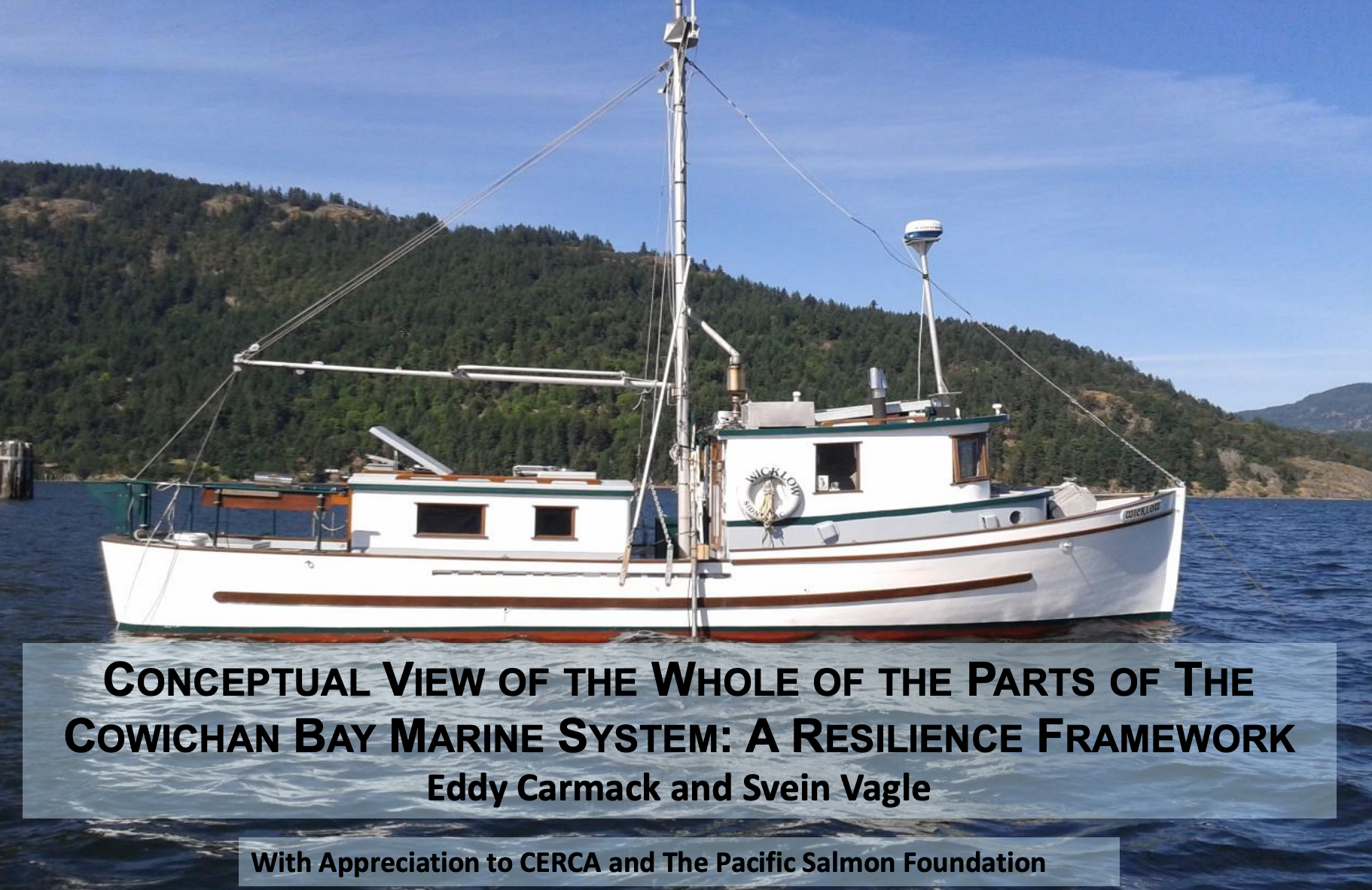Estuary Ecosystem Complexity
Conceptual View of the Whole of the Parts of The Cowichan Bay Marine System: A Resilience Framework
The above was the title of an enlightening presentation by Eddy Carmack and Svein Vagle at CERCA's estuarine health indicator workshop.
I asked Eddy for permission to publish the presentation, he jointly produced with Svein, on our website. The rationale for singling out this powerpoint is because of its clarity and simplicity in explaining the complexity and inter-dependencies and connectedness of an ecosystem. By randomly choosing the Arctic Cod standing in for all live organisms of a marine ecosystem Eddy shows what happens to it when one after another critical habitat requisite disappears. At the end there is no escape, the cod has to get out or die.
The same applies to the millions of species who all have their species- specific requirements for distinct habitat requisites safeguarding their survival. In Eddy's example the cod which can't find new suitable space to live because it is already occupied by others, or destroyed, will die.
This is already happening to thousands of species world-wide. It starts with local and eventually global extinction.
One Key requisite shared by all live organisms (except possibly for some bacteria...) is oxygen. Once not any longer available all species depending on it will die. This is being show-cased already by the "dead zones" of our oceans, happening mostly in front of river deltas and heavily populated coastal zones as demonstrated by the map of unknown source.
"Dead zones" (i.e. areas deprived of oxygen, a phenomenon referred to as "hypoxia") can occur naturally, but are mostly man-caused, usually as a result of poor agricultural practices or other human pollution. But Dead Zones are not restricted to oceans only; they can also be found in ponds, rivers, and lakes. We don't have to go far for a prime example: the Quamichan Lake in the Cowichan Valley with dangerously depleted level of dissolved oxygen.
Restoring ecological functioning of such areas -if at all possible- can be very costly compared to preventing pollution in the first place and conservation measures.
Globally the largest dead zone exceeding the size of Florida is found in the Arabian Sea; the second largest in the Gulf of Mexico with detrimental effects on sea life and local economies. Commercial fishing in the Baltic Sea has dramatically decreased both due to overfishing and low levels of dissolved oxygen. Scientific studies also show that any fish surviving low oxygen levels suffer reproductive problems, resulting in low egg counts and spawn rates.
The low water levels of the Cowichan and Koksilah rivers in late summer cause water temperature to increase dramatically, resulting in a reduced availability of dissolved oxygen.
Against this background monitoring the "health" of our estuaries and their tributaries is essential in order to identify adverse impacts and their root causes at an early stage, enabling the development of remedial interventions. However, in order to design meaningful monitoring we first have to identify Key health indicators to use that are practical, doable, economically feasible and sustainable, the reason for CERCA's multi-disciplinary workshop on "Estuarine Health Indicators".
Dr. Goetz Schuerholz, Chair CERCA


